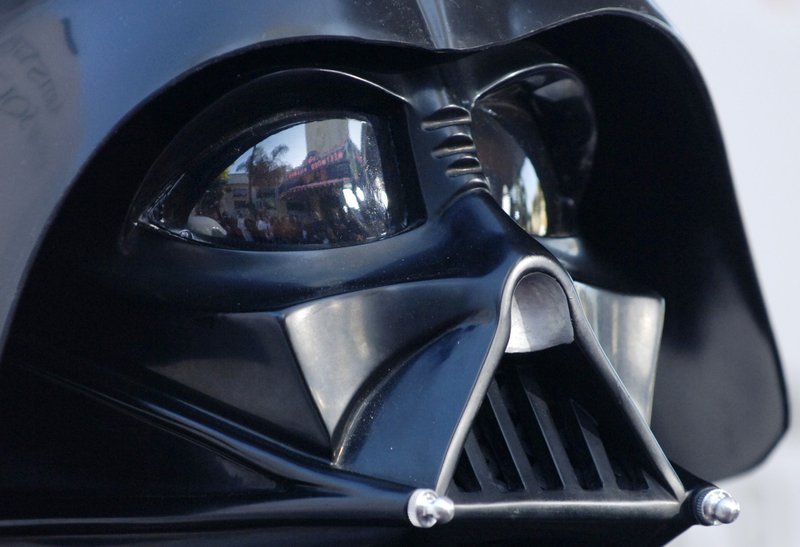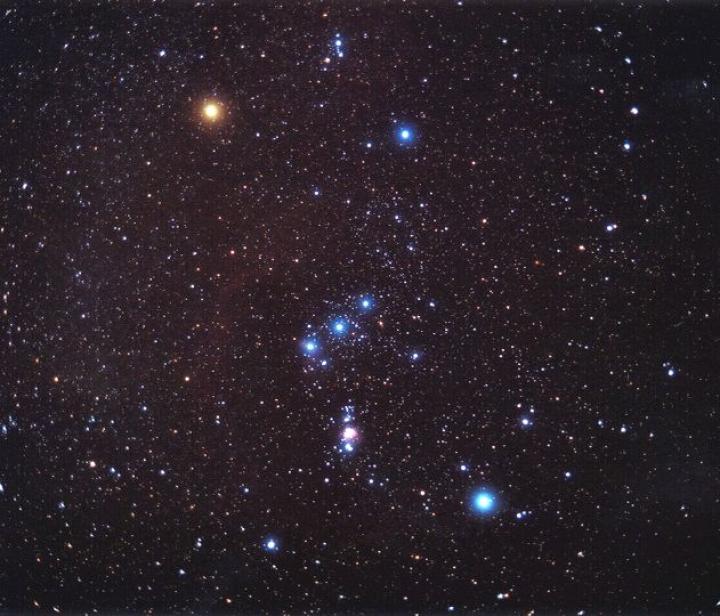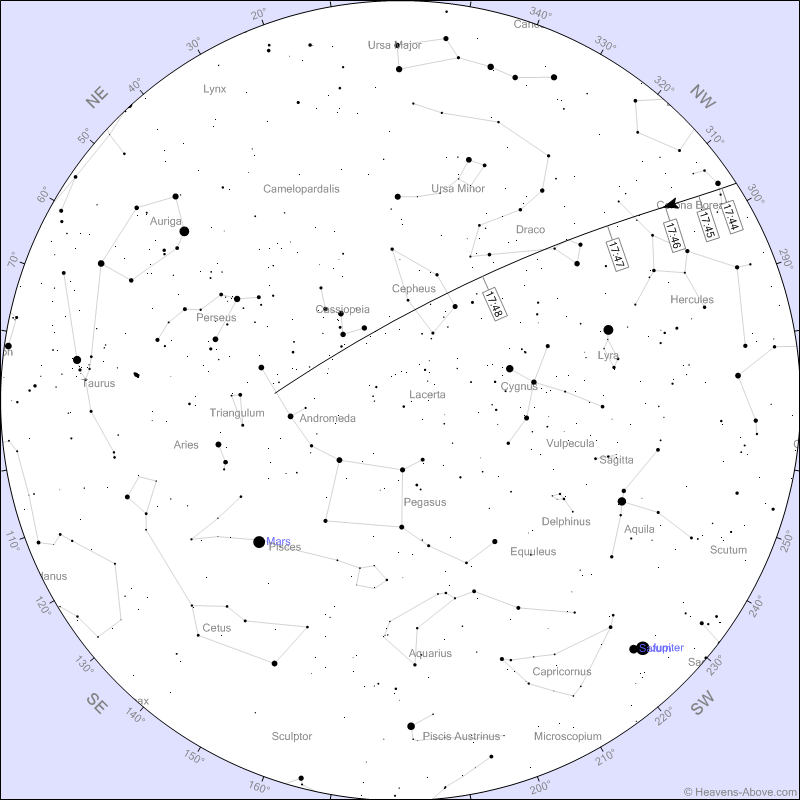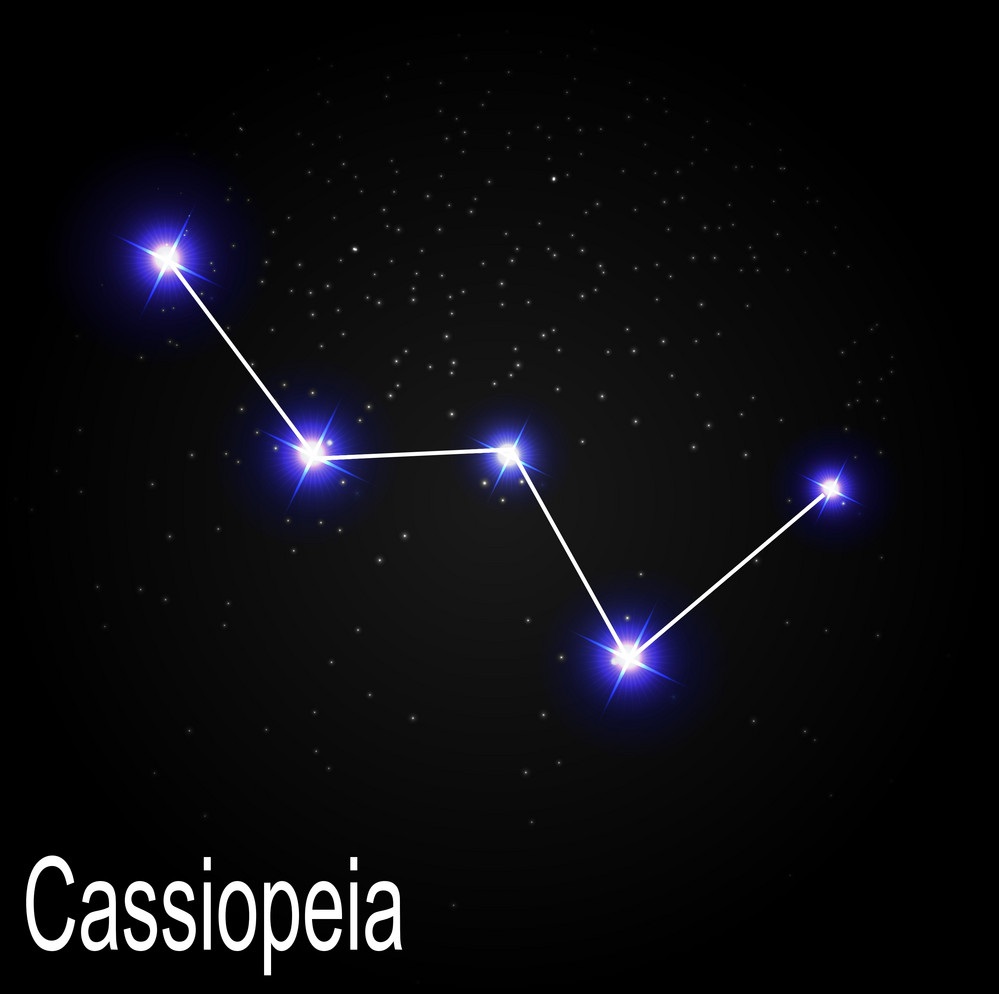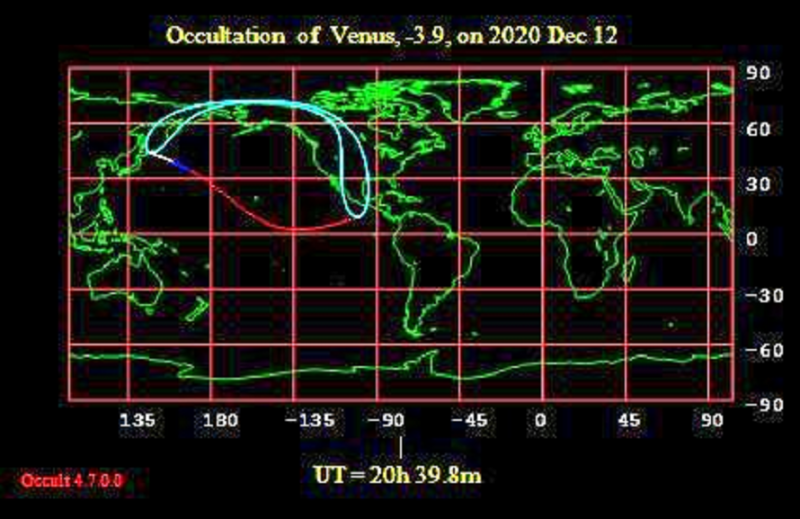Merely by observing Orion ascending in the eastern sky, one can well understand why he is known as the "Giant Hunter." His broad shoulders (marked by Betegeluse and Bellatrix), his glittering belt (Mintaka, Alnilam and Alnitak), his strong knees (Rigel and Saiph) along with his bronze club and sturdy shield encompass 594 square degrees of the sky. Though in size it still ranks only 26th out of 88, Orion's retinue of brilliant stars makes it not only distinctive, but dazzling! Five of its stars rank within the top 50 of the night sky's brightest stars: Rigel (7th), Betelgeuse (10th), Bellatrix (26th), Alnilam (29th),and Alnitak (33rd).
This hunter is the winter sky centerpiece. December is the best month to find Orion as it will be rising at dusk and remains visible until just before the onset of morning twilight. Mythologically, Orion pursues the Pleiades, the seven daughters of Atlas, across the sky. Though destined never to catch them, Orion refuses to abandon the pursuit. One can see the Pleiades Star Cluster to Orion's northwest. Taurus the Bull separates the constellation and cluster and also serves as the sisters' ever vigilant protector.
SATURDAY, DECEMBER 5: THE MONTH'S BRIGHTEST ISS FLY-OVER
We'll have many opportunities to watch the International Space Station move through the night sky this month. (Go to www.heavens-above.com for more information about visible fly-overs.) The brightest December 2020 fly-over occurs tonight!
The International Space Station will rise at 5:43:05 p.m. in the northwestern sky. At 5:48:34 p.m, the station attains its maximum altitude of 74 degrees. The station enters the shadow at 5:48:59 p.m. and will vanish. During its journey through the firmament, the ISS will slice across the constellations Corona Borealis, Hercules, Draco the Dragon and Cepheus. It will reach Andromeda at the moment it disappears.
The International Space Station revolves around Earth at an altitude of approximately 260 miles and requires approximately 92 minutes to complete one orbit around the planet. We can see the space station only when it is close enough to the Sun to reflect its light back to us. These visible fly overs occur either in the early evening or in the pre-dawn.
MONDAY, DECEMBER 7: LAST QUARTER MOON
Find the last quarter moon within the constellation Leo the Lion. The quarter moon rises around 11:32 p.m.
TUESDAY, DECEMBER 8: CIRCUMPOLAR CASSIOPEIA
At any given time of night at any time of year, mid latitude observers can see six constellations: Ursa Major, Ursa Minor, Draco, Camelopardalis, Cepheus and Cassiopeia. These circumpolar constellations appear to describe circles around Polaris, the star located close to the North Celestial Pole. Cassiopeia begins the night high in the northwestern sky and then descends toward the horizon throughout the evening. Resembling the letter "w," Cassiopeia represents the braggadocious Ethopian queen whose boast that her daughter Andromeda was more beautiful than the Nereids so infuriated Poseidon that he unleashed Cetus the Seamonster to devastate her kingdom. In order to appease the monster, Cassiopeia and her husband Cepheus had to chain their daughter Andromeda to the shore as an offering to Cetus. Fortunately, Perseus eventually arrived. He promptly slew the monster and then married Andromeda.
WEDNESDAY, DECEMBER 9: VENUS IN THE MORNING!
If you're awake before sunrise, look toward the eastern pre-dawn sky and you will see a brilliant "star-like" object, the planet Venus. Venus is brighter than any other planet or night sky star. (Only the Sun and Moon appear brighter.) We can ascribe Venus' brightness to four factors:
- Albedo: Venus reflects 67% of all incidental sunlight back into space. The planet's pervasive cloud cover is responsible for its high reflexivity.
- Distance from Earth Venus is closer to Earth than the other planets (although at times Mars will be closer). Light intensity diminishes with the square of the distance, so the closer the luminous object, the brighter it will appear.
- Distance from the Sun: Since Venus is closer to the Sun than Earth, the sunlight it receives will be more intense than the light striking Earth.
- Size: Venus' volume is 86.6% that of Earth, making it the second largest of the four inner planets. It reflects light off a large surface area, or, more correctly, off a large cloud area.
SATURDAY, DECEMBER 12: VENUS CLOSE TO THE MOON (SILVER EVENT!!)
Venture outside before dawn and see the night sky's two brightest objects "close" together. We put the word "close" in quotation marks because the objects will only appear to be near one another. In fact, the moon will be approximately 224,000 miles from Earth while Venus' distance will be slightly more than 138 million miles!
Interesting note: The moon will occult -move directly in front of- Venus for observers around the mid-section of North America and extreme northeastern Asia. Any observer living in regions contained within the blue loop below will have the opportunity to witness this occultation.
Because the moon has no atmosphere, Venus will appear to "blink out" of sight within an instant once it is occulted. Venus will then reappear in an instant again as the moon moves away from it. By observing an occultation, one can see direct lunar motion.
MONDAY, DECEMBER 14: NEW MOON
MONDAY, DECEMBER 14: GEMINID METEOR SHOWER PEAKS
Meteors are mesospheric events, meaning that they generally occur high in the Mesosphere, between 75 - 100 kilometers above Earth's surface. This altitude is just at or below the Karman Line (100 km) that marks the official boundary of outer space. Meteors are the lights we see when meteoroids infiltrate our upper atmosphere. The meteoroid heats up as it descends and excites the nearby atmospheric atoms, meaning that the electrons within them are elevated to higher energy states. When the electrons revert to their previous states, they emit the photons we perceive as "meteors." Meteor showers are named for the constellation from which the meteors appear to emanate. The Geminid meteors appear to come out of the constellation Gemini. One can best see these meteors after midnight, when our part of the planet is turning into the densest part of the meteor stream. At that time one would be able to see about 30 - 40 meteors an hour from this shower. Fortunately, the moon is new tonight and so we won't have to contend with any lunar light interference.
Part II tomorrow.
To subscribe or unsubscribe from the Daily Astronomer: